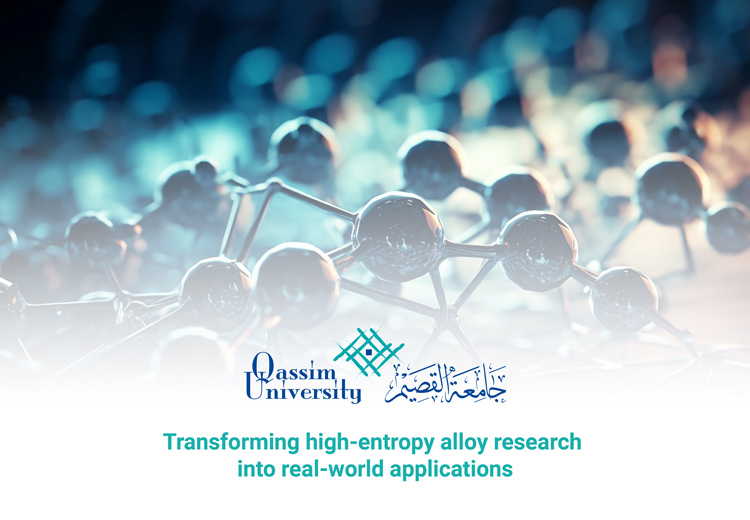Transforming high-entropy alloy research into real-world applications

Sponsored by

Sponsored by

By collaborating with academic and industry partners, Qassim University hopes its materials research can be put to use in numerous industries
While high-entropy alloys may not be particularly well known today, research into these materials is generating a great deal of excitement due to the hope that they may one day find revolutionary use cases across several fields. Subbarayan Sivasankaran, associate professor in the Department of Mechanical Engineering at Qassim University’s College of Engineering, is one of the foremost experts in high-entropy alloys. Sivasankaran spoke with Times Higher Education about his work in this area and his hopes that it will lead to real-world impact.
“Across the group that our department put together, we are developing a lot of novel materials, namely, advanced bio-implant materials, advanced metal matrix composites, nanostructured and nanocomposite materials, currently focusing on high-entropy alloys,” Sivasankaran explains. “In the beginning, we developed a lot of nanocomposite materials that could one day revolutionise aviation, as well as lead to the creation of critical applications where temperature-resistant materials are needed.”
By studying the behaviour of the materials being worked with, Sivasankaran was able to propose many new applications. Many of the materials used today are single-phase nanomaterials, where strength decreases as temperatures rise. “We wanted to develop a material that retains its strength at higher temperatures,” Sivasankaran says. “That was a real factor behind our research into high-entropy alloys.”
In seeking new insights around high-entropy alloys, it is hoped that real-world impact can be made across various industries. “For example, we recently developed a medium-entropy alloy that led to collaborations with other university departments,” Sivasankaran adds. “We also sent a sample of this material to Egypt, where it was confirmed to have some anti-bacterial and even cancer-resistant properties. In addition to this, we also have hopes that our materials will have real-world applications for the space and automotive industries.”
As with most academic undertakings, collaboration is essential to Sivasankaran’s research. This extends to working with other institutions, government bodies and the private sector. “Working in our department alone is unlikely to lead to real-world applications,” Sivasankaran explains. “This is why we have collaborated with other departments like electrical engineering and physics for a number of years, as well as other universities within the Kingdom of Saudi Arabia.”
International collaboration also plays a fundamental role in Sivasankaran’s hopes for the future of his research, as seen in the partnership his faculty has with the University of Taipei, Pohang University of Science and Technology in South Korea, the China University of Mining and Technology and the Indian Institute of Technology Delhi. These collaborations have led to fruitful outcomes in terms of knowledge-gathering and publications.
“We believe that our research into advanced materials like high-entropy alloys will ultimately result in the development of real-world components,” Sivasankaran says. “We are currently working on the development of a new Apple iPhone case and engine valves in our lab. Whatever new material we are developing, we want to transform it into real-world components. As such, we send our samples for testing so companies can check their performance and validate any potential applications. This demonstrates how important partnerships are to the work we do. Our department is a very international one and we hope that the real-world applications that will emerge from our research into high-entropy alloys will similarly have impact that is felt around the world.”
Find out more about the Department of Mechanical Engineering at Qassim University.